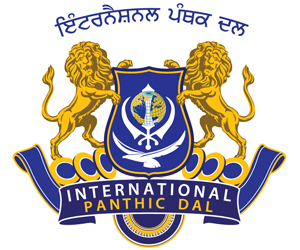Anti-incumbency is once again the buzzword with a twist in Punjab. As the state makes its run up to the Assembly polls on January 30, the phenomenon that has alternately brought the Shiromani Akali Dal (SAD) and its partner BJP, and the Congress to power is this time applicable to both. The ruling SAD-BJP combine will be battling anti-incumbency in the state, while the Congress will be fighting a central UPA anti-incumbency rub off.
That rub-off has been heightened more so with the Anna factor boosting the issue of corruption to a new level. This struggle against anti-incumbency of different grades in a way levels the playing field for both the SAD-BJP ruling combine and challenger Congress.
The Congress, meanwhile, appears to be fighting an election that is for it to lose. Even as the needle has been swinging in its direction, a bungled approach to ticket distribution, ignoring winning candidates, and then after ticket allotment once again trying to rejig seats, a delayed announcement of candidates, all seem to be eating away from the Congress tally that could have been.
The turf is an expansive 117 assembly seats. This is an election that assumes added significance as occupying centrestage in the poll arena is Sukhbir Badal. After having propelled the SAD to win a quantum of seats that enabled them along with the BJP to from the government in 2007, Sukhbir Badal initially assumed the role of behind the scenes operator of the government. After being appointed the deputy chief minister he in fact became the de-facto chief minister, commanding greater responsiveness from the state machinery than perhaps even his father in his official capacity did.
And that perhaps was a mixed bag for him. It was good because it gave Sukhbir a platform that he could leverage to his advantage as the top SAD leader. It was bad because it exposed several flaws in his persona to the party leadership and cadre. So much so that there was talk of Sukhbir having an overbearing style of functioning and dominating other leaders to such an extent that it made them wonder if they have a future in the party.
If Sukhbir becomes the chief minister, aspirations of high office in the SAD would effectively be dashed for those who have spent a life time with the party hoping to someday rise to the top. It would be a party that the Badals would have dominated all through.
Despite having often cried hoarse about dynasty politics in the Congress, here is SAD now with a similar problem at the helm. Amongst those who began to gradually drift apart and eventually be at logger heads, the biggest detractor turned out to be one from within the family. 49 year-old Manpreet Badal, the state finance minister has his own view of how Punjab needs to be rescued from a debt trap, a VIP culture and a hundred other problems. As the finance minister he felt hemmed in by cousin Sukhbir’s way of prioritising issues and the imminent elevation of Sukhbir further darkened prospects of rising within the party for Manpreet.
The biggest salvo that Manpreet fired seriously souring relations with his cousin Sukhbir was when he said Punjab is caught in a debt crisis and it should take a conditional debt waiver from the UPA. The Punjab Government promptly refuted Manpreet’s claims that the Centre had come up with a special term loan waiver scheme for Punjab, saying it had not received any written offer from New Delhi conditionally waiving off Rs 35,000 crore of the state`s debt. Manpreet was pushed to a corner within the party and eventually expelled from the SAD, a prty where he had been three time MLA from Gidderbaha in Muktsar district. Realising that hope for reconciliation would essentially mean being relegated to second rung leadership for life, Manpreet went ahead and formed a third front in Punjab’s politics.
Manpreet Badal’s People Party of Punjab (PPP)-led Sanjha Morcha in which the PPP and the Akali Dal (Longowal) joined hands with the CPM and CPI, has promised much to the electorate in its common minimum programme (CMP). It, however, has a long way to go in demonstrating its effectiveness at the forthcoming Assembly polls. The party confesses on its website that PPP chief Manpreet Singh Badal has found the going tough in recent months as he faced attacks from his family and erstwhile party.
However, the presence of CPM leaders Prakash Karat and Nilotpal Basu, CPI leader AB Bardhan, and Akali Dal (Longowal) leader Surjit Singh Barnala at a recent political rally, has boosted the viability of the new dispensation in popular minds. Various components of the Sanjha Morcha cannot claim to hold sway over all of Punjab, like the Shiromani Akali Dal and the Congress can, but they are effective in different regions of the state, and as such, together hope to gain far more than they can achieve individually. As expected, the common minimum programme of the Sanjha Morcha is rich in promises, which seek to balance much-needed reforms with populism.
However, more than anything else, it is the promise of a third alternative emerging in the political scenario of Punjab that is of significance to an electorate disenchanted with the two main political fronts in the state.








